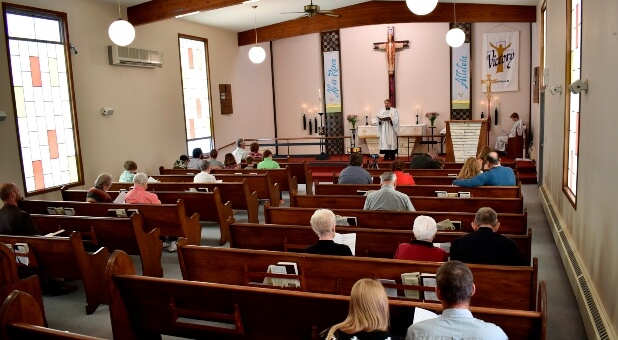Reopening our country will not be easy. And neither will be the reopening of churches across America.
Most organizations are facing significant challenges brought on by the virus. Business owners feel overwhelmed and emotionally traumatized.
The challenge is far from over. The state of Texas issued guidelines in the phase one of reopening the church. Wow! The challenge is uphill. The church is up for the challenge and the church will thrive again.
This article focuses on the Texas guidelines, but most states will follow a similar pattern.
Texas Guidelines
The governor of Texas issued an “executive order” with a list of guidelines, which I outline below. The guidelines across the 50 states will likely resemble the Texas order.
I read the guidelines. We have our work cut out for us. Some pastors are not prepared. Most pastors believe it will be easier to stay closed. With 35 years of pastoral experience, I have managed my share of problems. The problems of reopening the church would be easy if everyone would cooperate.
But they won’t, and here’s why.
Social Distancing
Practice social distancing by maintaining an appropriate distance between people.
Social distancing is excellent advice, and I support it fully. But, Houston, there is a church problem. Christians are not in the habit of practicing social distancing. Social distancing goes against every natural instinct of Christians. Christians are known for hugging each other and holding hands in prayer.
The weird ones greet each other with a holy kiss.
Getting Christians to respect social distancing may be the biggest miracle the church will ever experience. Even if they honor social distancing in the building, they will violate the rule in the parking lot.
There are two problems. Some will refuse to honor social distancing and go to hug Suzy Saint. That’s a problem.
Another member will go to hug Suzy Unsocial, and she doesn’t want a hug. She’s a rule keeper. This will be interesting to manage. Churches are full of rule breakers and rule keepers. Social distancing is a challenge for both.
Over 65 Only
Encourage all attendees 65 and above to stay home and watch the services online or provide a “senior service” only for attendees 65 and above to attend in person.
The struggle for churches is spacing. Maintaining 6 feet of social distancing drops the seating capacity to one-third.
A church of 600 will host six services.
An exclusive service for seniors is a great idea. But it feeds the space problem and adds another service to the calendar.
But here is the question. If we are to practice social distancing, why would we add an exclusive service for seniors? The social distance rule applies to all services. Right?
We should consider the fact that social distancing works for all age groups.
If we comply with social distancing guidelines, no exclusive service would be warranted.
Including seniors and children.
Churches are not set up to handle the CDC regulations for children.
Consider keeping childcare closed, unless the house of worship can comply with CDC guidelines for childcare facilities.
Having no childcare is a problem for churches. Most churches are family-focused and kid-friendly. This rule forces parents to leave their kids at home, or the children must be with parents during the service.
Most kids were raised in “kids’ church.” Most parents will choose to stay at home in the reopening stage.
More From the State of Texas:
—Sanitize the hands of all those who attend the service.
—Ask all attendees who have underlying at-risk health conditions, sick employees and infected volunteers to stay home and watch the services online.
—Consider refraining from passing collection plates and instead provide a central collection box in the building or encourage online giving.
—Consider how the sacraments are administered without attendees having to touch the same surfaces and objects.
—Maintain good hygiene by washing your hands frequently, using hand sanitizer, using your elbow to cover coughs and not touching your face.
—Equip ushers and greeters with masks and gloves throughout the entire service.
—Implement environmental cleanliness practices.
—Clean and disinfect work areas frequently.
The above guidelines are useful. Churches have followed these guidelines for many years.
The virus adds a new dimension to maintain a cleaner facility.
Clergy should dismiss attendees by the family unit, maintaining social distancing.
Also noted was that only family members can sit together.
And families will exit one family unit at a time from the sanctuary.
Let’s look at the experience:
—Sit with family only.
—Greet no one physically.
—Hug no one.
—Touch no one.
—Dismiss in family units only.
—Go home.
What is the real purpose of driving to the church?
We can do that at home. Right?
Touch no one, greet nobody, hug nobody—check it off.
Why drive to the church?
There Is an Advantage
Certain people make us feel better just by seeing them.
Certain people add a smile to our lives.
All the social butterflies will show up on opening day.
Pastors love social butterflies. They make the church work.
The social buffs love a real-life church experience. The introverts enjoy a digital home experience.
The digital experience has limitations. A church service on a computer screen is not comparable to a face-to-face encounter.
A church service at your fingertips is convenient, but it cannot replace the benefits of connection.
The Scripture strongly suggests that believers gather.
Gathering has an unseen advantage.
“Not forsaking the assembling of ourselves together, as is the manner of some, but exhorting one another, and so much the more as you see the day approaching” (Heb. 10:25, NKJV).
Should we gather? Yes.
Have you ever heard you had to be there?
Well, be there.














































